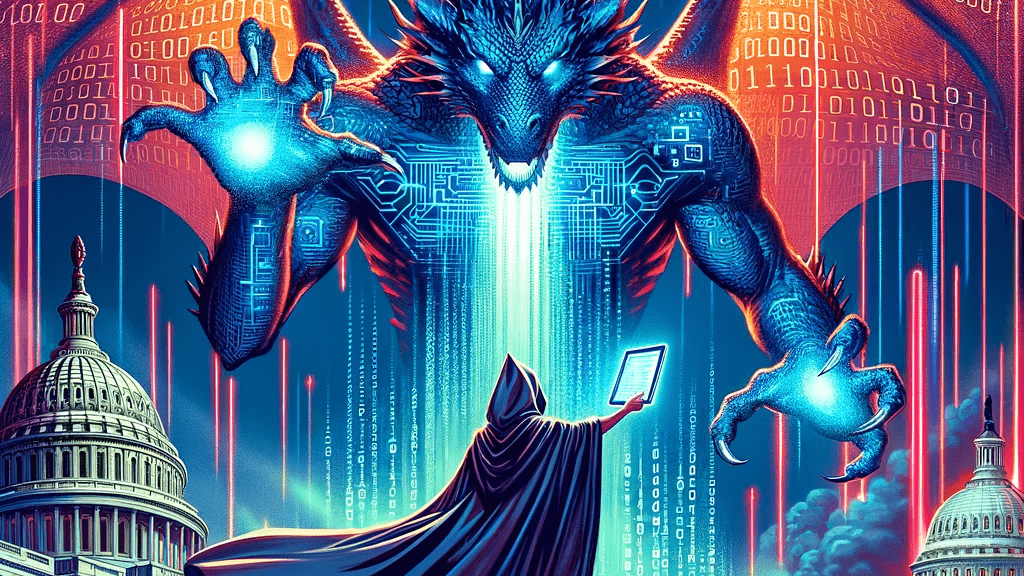A Deep Dive Into Regulatory Insights And Technical Implications
October 30th, 2023, is a pivotal date in the landscape of AI applications and their legal implications within the United States. On this significant day, President Biden issued a landmark Executive Order titled “Safe, Secure, and Trustworthy AI.” Concurrently, the American Bar Association’s Section of Intellectual Property Law delivered a comment letter to the U.S. Copyright Office in response to the Office’s Notice of Inquiry, addressing the intricate intersection of artificial intelligence and copyright-related issues.
In this post, we delve into the key takeaways and insights stemming from these two crucial developments. These initiatives hold immense implications for the future of AI innovation and its harmonization with existing legal frameworks.

Broad Coverage Across Multiple Domains
One of the standout features of this EO is its extensive coverage. It addresses principles of safety and security, privacy, civil rights, consumer and worker protections, innovation, competition, and national security. This comprehensive approach underlines the importance of AI in virtually every facet of society.
Cross-Agency Involvement
The EO underscores the importance of AI across industries by involving multiple federal agencies in its regulation. This cross-agency approach emphasizes the significance of AI risk management and its impact on various sectors.
A Push For More Legislation And Regulation
This EO not only introduces its own set of regulations but also calls upon Congress to pass data privacy legislation. It urges federal agencies to strengthen guidelines for data collection and privacy protections. This legislative push indicates the government’s commitment to ensuring AI is developed and used responsibly.
Elevated Regulatory Expectations
With this EO, we can anticipate more rigorous standards and expectations from regulators concerning data collection, testing, reporting, and outcomes. Organizations working with AI will likely need to invest in tools and skill development for AI risk management.
New Standards For AI Safety And Security
The EO mandates the establishment of new standards for AI safety and security. These standards include requirements for developers of powerful AI systems to notify the federal government, report safety test results, and ensure AI systems’ safety before public release. The involvement of agencies like the National Institute of Standards and Technology (NIST) and the Department of Homeland Security (DHS) emphasizes the gravity of AI safety.
Privacy Protection
Privacy protection is a central theme in the EO. It calls for the development and use of privacy-preserving techniques, including advanced AI approaches that safeguard training data. The focus on evaluating agencies’ collection and use of personal data showcases the government’s commitment to protecting citizens’ privacy.
Innovation And Competition
The EO aims to maintain and strengthen U.S. leadership in AI innovation and competition. It does so by catalyzing AI research, promoting a fair and competitive AI ecosystem, and modernizing visa criteria to attract skilled professionals.
Government Use Of AI
The EO addresses the responsible deployment of AI in government operations. It issues guidance for agencies on AI use, improves AI procurement, and supports the rapid hiring of AI professionals. This underscores the government’s commitment to leveraging AI for better governance.
Consumer, Patient, And Student Protection
The EO emphasizes the need to protect consumers, healthcare patients, and students from AI-related risks. It focuses on responsible AI use in healthcare, drug development, education, and more.
Worker Protection
Acknowledging AI’s impact on jobs and workplaces, the EO directs the development of principles and best practices to mitigate harm and maximize benefits for workers.
Equity And Civil Rights
Ensuring equity and civil rights in AI applications is a top priority. The EO calls for clear guidance to prevent AI algorithms from exacerbating discrimination and addresses algorithmic discrimination in various domains.
International Collaboration
Finally, the EO promotes international collaboration on AI safety and standards. It seeks to establish international frameworks, accelerate the development of AI standards, and promote responsible AI deployment worldwide.
In conclusion, the Executive Order on Safe, Secure, and Trustworthy AI is a comprehensive and forward-looking initiative that addresses critical aspects of AI development, regulation, and ethical use. Its impact will be felt across industries and underscores the need for responsible AI innovation and deployment. Organizations and professionals working in AI must stay informed and adapt to these evolving regulatory and technical landscapes.
American Bar Association Submitted RFC Letter
Attachment: Notice of Inquiry and Request for Comments: Artificial Intelligence and Copyright (Docket No. 2023-18624)
The American Bar Association’s Section of Intellectual Property Law submitted a comment letter to the U.S. Copyright Office regarding artificial intelligence and copyright matters on October 30th, 2023. In the letter, several key points are emphasized.
First, the ABA Section expresses opposition to recognizing AI systems as authors or copyright owners within the framework of U.S. copyright law, asserting that true authorship necessitates human creativity. The letter suggests that when a human employs an AI system to generate a creative work, the human should be regarded as the author, provided they contribute a sufficient degree of creativity and maintain control over the process.
Furthermore, the letter underscores the view that it is presently premature to enact AI-specific legislation, emphasizing instead the importance of monitoring developments in this rapidly evolving field. Existing copyright law doctrines such as fair use and constraints on derivative works are posited as mechanisms capable of addressing concerns related to AI-generated content.
The ABA Section maintains that while some degree of protection for AI-generated outputs may be beneficial to foster AI development, this protection must be carefully balanced against potential implications for human creators. It argues that sui generis protection is unnecessary, as existing copyright law is likely to be adequate.
The Copyright Clause is suggested to allow protection for works featuring a substantial degree of human involvement. Beyond these considerations, the comment letter addresses a range of issues encompassing licensing, liability, international ramifications, and impacts on various industries, including the legal sector. In conclusion, the ABA advises against precipitous regulation and advocates for sustained examination of this intricate and evolving matter.







